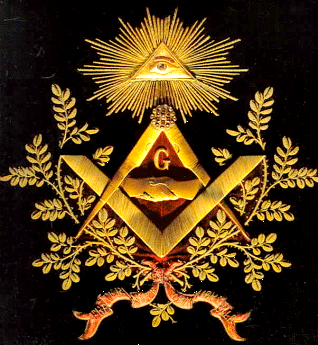 “The Blazing Star in our Lodges represent Sirius. The Blazing Star has been regarded as an emblem of Omniscience, or the All Seeing Eye, which to the Ancients was the Sun.” – Albert Pike, Morals and Dogma.
“The Blazing Star in our Lodges represent Sirius. The Blazing Star has been regarded as an emblem of Omniscience, or the All Seeing Eye, which to the Ancients was the Sun.” – Albert Pike, Morals and Dogma.
The word “Seirios” is Greek for the English “Sirius” meaning “scorching” or “sparkling.” The ancients described the rising of the star Sirius to be associated with the scorching heat of the torrid days of midsummer we know of today as the “dog-days” for this reason. The spirit of Isis was said to be in Dog Star and the Greeks called Sirius the soul and water carrier of Isis. Initiates into the Secret Mysteries of Isis wore masks representing heads of dogs. In the Kyme Aretology, Isis declares that, “I am She that riseth in the Dog Star.” The description of her star in Hesiod’s Shield of Heracles described the influence of the magic of Isis, “Of these men the souls sink into the earth into the house of Hades, but their bones, once the skin has putrefied around them, putrefy in the dark earth under the influence of scorching Sirius.”
Proverbs 2:18 – For her house leads down to death and her paths to the spirits of the dead.
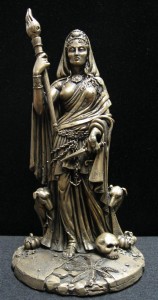 Hecate is one of the many titles of Isis and in the magical papyri of Ptolemaic Egypt, she is called the ‘she-dog’ or ‘bitch.’ Lucan says, “We have received into our Roman temples thine Isis, and divinities half-dog.”This title for Isis is associated with the dog which also correlates with her shining symbol in the heavens known as Sothis or Sirius. Sirius is the alpha star in the constellation of Canis Major,” the Great Dog” or more commonly known today as the “Dog Star.”
Hecate is one of the many titles of Isis and in the magical papyri of Ptolemaic Egypt, she is called the ‘she-dog’ or ‘bitch.’ Lucan says, “We have received into our Roman temples thine Isis, and divinities half-dog.”This title for Isis is associated with the dog which also correlates with her shining symbol in the heavens known as Sothis or Sirius. Sirius is the alpha star in the constellation of Canis Major,” the Great Dog” or more commonly known today as the “Dog Star.”
In the occult, Sirius is “the sun behind the sun” or the hidden god and as the moon reflects the sun, so does the sun reflect Sirius. The star Sirius and the dog are also symbols for mercury and in turn the symbols for Hermes, Cadmus, Gautam or Buddha – the great Instructor of mankind as seen in Matthew 2:2 – and asked, “Where is the one who has been born king of the Jews? We saw his star in the east and have come to worship him.”
Horus is the ‘son’ of Osiris who is God and the sun (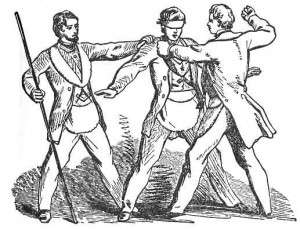 the star Sirius. Horus we find in Freemasonic literature as Hiram Abiff (other spellings “Huram””Abif”, and “Huram-Abi”) also known as “the Widow’s Son”. From Horus who is Hrumachis we get “Huram.” The deceased father is Osiris; the Sun and the Light for we currently live under the night of the Balck Widow whose darkness envelops the son (Horus the phoenix) of the sun in her veil.
the star Sirius. Horus we find in Freemasonic literature as Hiram Abiff (other spellings “Huram””Abif”, and “Huram-Abi”) also known as “the Widow’s Son”. From Horus who is Hrumachis we get “Huram.” The deceased father is Osiris; the Sun and the Light for we currently live under the night of the Balck Widow whose darkness envelops the son (Horus the phoenix) of the sun in her veil.
The middle Persian name of Mercury was Tir, which comes from old Persian Tira. From the Persian word Tyr or Tir comes the ancient city of Tyre. Tyre is an ancient Phoenician city and the legendary birthplace of Europa and Elissa (Dido) and today it is the fourth largest city in Lebanon. Hiram, King of Tyre and Hiram Abiff, the central figure in the mythology and symbolism of Freemasonry, is said to have hailed from Tyre and is credited in 2 Samuel 5:11 and 1 Kings 5:1-10 for having sent building materials and men for the original construction of the Temple in Jerusalem. Tyre is also prominently featured in the Shakespeare play Pericles, Prince of Tyre.
From the Persian word Tir derives another name for Isis, Tishtar and from Tishtar we get the name Ishtar that can be found on the Babylonian Tablets which confirm this fact as they refer to Isis as Ishtar, where she claims “I brought them (
The Persian word Khan, a title of dignity or ruler of a monarchy, and is also translated as king in the East. The word Khan is said to be identical with Can derived from the Latin Canis. From the Latin Canis we get the name for the ancient country known as Canaan for whom the Canaanites were named and also the Canaan dog. The dogs of Canaan began in ancient times as a mongrel in ancient Canaan, where the Canaanites lived, roughly corresponding to the region encompassing modern-day Israel, Palestinian territories, Lebanon, and the western parts of Jordan. The Canaan dog would seem to mimic the exact characteristics of the people of Israel we know of today as the Canaanites making this connection to the national breed dog of Is-Ra-El apocalyptic.
2 Kings 8:13 – And Hazael said, “What is your servant, who is but a dog, that he should do this great thing?” Elisha answered, “The Lord has shown me that you are to be king over Syria.”
1 Kings 21:19 – And you shall say to him, ‘Thus says the Lord, “Have you killed and also taken possession?”’ And you shall say to him, ‘Thus says the Lord: “In the place where dogs licked up the blood of Naboth shall dogs lick your own blood.”
The Ethiopian Ptoembarii had a royal dog that was said to be worshiped as king whose voice and action were carefully interpreted by a select body of priests.
The Rourans were the first people who used the titles Khagan and Khan for their emperors. In Turkestan is the legend, “King Cambellannas, son of the great Khan,” by which legend is probably meant Timur, who reunited the numerous small kingdoms into which, about 1350, Dschagati had fallen. King Cambalech, “Rex Cambalech hoc est magnus cannis,” “King Cambalech, that is, the Great Khan,” (Canis Magnus, Canis Grandis) or ‘le Grant Chien’ is represented in picture as ruling Cathay, and the King of India is represented on horseback with sword in hand.
 This connection of Khan with the Latin word for Dog, Canis can be seen in the medieval story titled, “Dog-Headed Tartars.” In the story the authors use the epithet “dog-headed” when speaking of their old enemies, the Tartars and it is said that medieval travellers, who wrote in Latin, speak of the Great Khan of Tartary as “Magnus Canis,” the ‘Great Dog.’ Many great conquerors took the imperial title Khaqan (“Khan of Khans“) applies to probably the most famous rulers known as Khan such as the thirteenth century Batu Khan and the most infamous of the Mongol imperial dynasty, Genghis Khan.
This connection of Khan with the Latin word for Dog, Canis can be seen in the medieval story titled, “Dog-Headed Tartars.” In the story the authors use the epithet “dog-headed” when speaking of their old enemies, the Tartars and it is said that medieval travellers, who wrote in Latin, speak of the Great Khan of Tartary as “Magnus Canis,” the ‘Great Dog.’ Many great conquerors took the imperial title Khaqan (“Khan of Khans“) applies to probably the most famous rulers known as Khan such as the thirteenth century Batu Khan and the most infamous of the Mongol imperial dynasty, Genghis Khan.
The old Irish used the word Cu, a dog, or hound, as a designation of honor to denote a hero, fierce warrior or king. Amongst the the Scythians or Picts of Ireland and Scotland in place and personal names, Cu-chulainn, Cu-ulad, Conan, etc., these, it has been suggested may be an echo of the time when the Kynesii or Kynetes, or Dog-men and Celts lived together (Prof. Mackinnon). In Britain, we find Cu as in Cunobelin: the head king, the solar king, dog of the sun, the pendragon. Pendragon or Pen Draig (pronounced Thriag), meaning in Welsh “head dragon” or “chief dragon.”
Cu which means Dog forms the beginning of a great many names such as Cu-mara, hound of the sea or the Pictish name Constantine which is 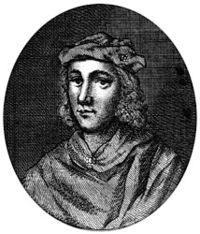 derived also from Cu. Constantine I of Scotland, in Latin “Constantín mac Fergusa” and in English, “Constantine son of Fergus.” Constantine I was king of the Picts (or of Fortriu), in modern Scotland, from 789 until 820. He is credited with having founded the church at Dunkeld which later received relics of St Columba from Iona. Also Cusantin mac Aeda who is Constantine II. He was a king of the Picts and died in 877.
derived also from Cu. Constantine I of Scotland, in Latin “Constantín mac Fergusa” and in English, “Constantine son of Fergus.” Constantine I was king of the Picts (or of Fortriu), in modern Scotland, from 789 until 820. He is credited with having founded the church at Dunkeld which later received relics of St Columba from Iona. Also Cusantin mac Aeda who is Constantine II. He was a king of the Picts and died in 877.
These Great Dog kings can then be seen in ancient Ireland under the names as “Cu” such as the “Hound of Ulster,” Cú Chulainn or his foe Cú Roí (Cú Ruí, Cú Raoi) mac Dáire, “hound of the battlefield” who is a king of Munster in the Ulster Cycle of Irish mythology. He is the son of Dáire mac Dedad (or Dáire Doimthech), and thus belongs to the Clanna Dedad. The Dáirine (Dárine, Dáirfine, Dáirfhine, Dárfine, Dárinne, Dairinne), later known dynastically as the Corcu 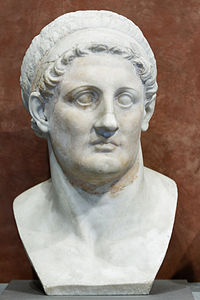 Loígde, were the proto-historical rulers of Munster before the rise of the Eóganachta in the 7th century AD. They appear to have derived from the Darini of Ptolemy and to have been related to the Ulaid and Dál Riata of Ulster and Scotland.
Loígde, were the proto-historical rulers of Munster before the rise of the Eóganachta in the 7th century AD. They appear to have derived from the Darini of Ptolemy and to have been related to the Ulaid and Dál Riata of Ulster and Scotland.
This would make perfect sense because the Ptolemies of Egypt were the last ruling dynasty in Egypt in the year 301 B. C when Ptolemy, a leading Macedonian general, ascended the throne of Egypt, and became the founder of a dynasty that ruled that country for nearly three centuries before the crown jewel of the desert had fell under the weight of Rome. These were the Greek Bedais, and the Roman Badanatha who were also the followers of the Cult of Isis.
In addition to a number of Scottish clans, as well as the British Royal Family, House of Saxe-Coburg and Gotha, (through the House of Dunkeld and note that Constantine I had founded the church at Dunkeld), 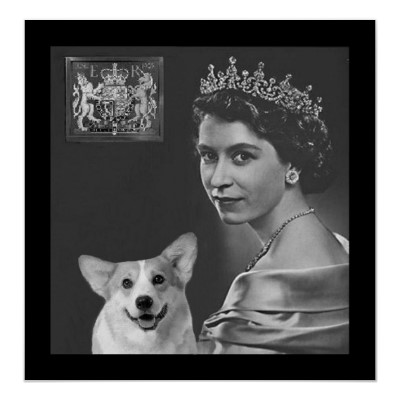 several Irish kindreds of note, in the provinces of Ulster and Munster, trace their origins either among the Darini/Dáirine proper or peoples closely related to them. The current British Royal Family are members of the House of Windsor. It was founded by King George V by royal proclamation on 17 July 1917, when he changed the name of his family from the German Saxe-Coburg and Gotha (a branch of the House of Wettin) to the English Windsor, due to the anti-German sentiment in the British Empire during World War I. Currently, the most prominent member of the House of Windsor is its head, Queen Elizabeth II, the reigning monarch of each of the Commonwealth realms.
several Irish kindreds of note, in the provinces of Ulster and Munster, trace their origins either among the Darini/Dáirine proper or peoples closely related to them. The current British Royal Family are members of the House of Windsor. It was founded by King George V by royal proclamation on 17 July 1917, when he changed the name of his family from the German Saxe-Coburg and Gotha (a branch of the House of Wettin) to the English Windsor, due to the anti-German sentiment in the British Empire during World War I. Currently, the most prominent member of the House of Windsor is its head, Queen Elizabeth II, the reigning monarch of each of the Commonwealth realms.
The Dog Days of summer first mentioned in an ancient calendar had been passed down to us by Saint Bede and in a calendar printed during the reign of Queen Elizabeth. This continued until the Restoration in 1660, when the Prayer Book was revised, and the Dog-days omitted and then in 1819 the Dog Days were again added to the British calendar where they still remain.
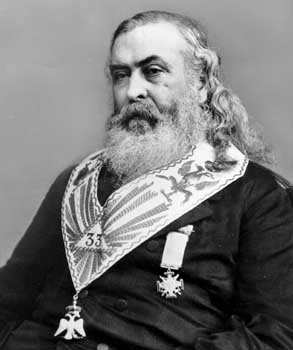 Sirius, the star of Isis is seen by the Dogon as a red star. The connection of Sirius to Freemasonry you will find in their own literature. Atlantis Masonic Lodge works in what’s called a Red Lodge where the first three degrees of Freemasonry (sometimes known as “red lodge” degrees) from the Ancient and Accepted Scottish Rite. 33rd Degree Freemason, Albert Pike in his infamous book, Morals and Dogma explains the Masonic connection to the Dog Star, “The Ancient Astronomers saw all the great Symbols of Masonry in the Stars. Sirius still glitters in our Lodges as the Blazing Star… He was Sirius or the Dog-Star, the friend and counselor of Osiris, and the inventor of language, grammar, astronomy, surveying, arithmetic, music, and medical science; the first maker of laws; and who taught the worship of the Gods, and the building of temples…”
Sirius, the star of Isis is seen by the Dogon as a red star. The connection of Sirius to Freemasonry you will find in their own literature. Atlantis Masonic Lodge works in what’s called a Red Lodge where the first three degrees of Freemasonry (sometimes known as “red lodge” degrees) from the Ancient and Accepted Scottish Rite. 33rd Degree Freemason, Albert Pike in his infamous book, Morals and Dogma explains the Masonic connection to the Dog Star, “The Ancient Astronomers saw all the great Symbols of Masonry in the Stars. Sirius still glitters in our Lodges as the Blazing Star… He was Sirius or the Dog-Star, the friend and counselor of Osiris, and the inventor of language, grammar, astronomy, surveying, arithmetic, music, and medical science; the first maker of laws; and who taught the worship of the Gods, and the building of temples…”
The Golden Dog is associated with Sirius and also Sut-Nub, the black-and-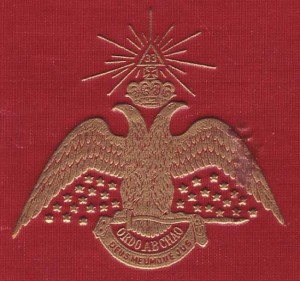
The forming of the Scottish Rite branch of Freemasonry had occurred in France. It is said that the city of Paris, the capital of France had derived its name from settlers along the river Seine, in northern France who were called Parisii or the Parisians. This Gaulish tribe known as the Parisii may have been the Persian Mobeds, the High Priest of the Parsis (Parsees) who are the Zoroastrians or the Magi who migrated to Gaul before the forming of Christianity and you will find that the Christian ritual and the rites of Zoroaster are very almost identical. The term “Parsi” in Sanskrit means “one who gives alms.” Zoroaster or Zerdusht is said to be the founder of the Cult of Isis in Persia; and Cadmus, and Inachus, in Greece; Orpheus, in Thrace; and Minos, in Crete.
The Parisii had first called the city Lutetia (more fully, Lutetia Parisiorum, “Lutetia of the Parisii”), during the Roman era of the 1st to the 4th century, but during the reign of Julian the Apostate (360–363), the city was renamed Paris. The Parisians who had been said were the followers of Isis had also built a Temple for Isis in this same location. This connection of the Parisii with Isis could very well be the descendants of these priests from the East who had carried their religious customs into France making Paris their capital and later they would have a tremendous influence in the forming of the United States of America through Freemasonry with the Ancient and Accepted Scottish Rite that still to this day has a strong influence in politics and our world.
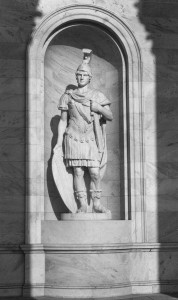 The motto for Paris is, “Only Paris is worthy of Rome; only Rome is worthy of Paris.” The only sister city of Paris is Rome and vice-versa. Rome, Maryland, was the original name of a community within Prince George’s County, Maryland, which would eventually become Washington, District of Columbia. Specifically, Rome was the original community name of Capitol Hill, upon which the United States Capitol Building sits. The Jefferson Memorial was modeled after the Roman Pantheon and the Roman God of War, Mars sits just outside the U.S. Capital building.
The motto for Paris is, “Only Paris is worthy of Rome; only Rome is worthy of Paris.” The only sister city of Paris is Rome and vice-versa. Rome, Maryland, was the original name of a community within Prince George’s County, Maryland, which would eventually become Washington, District of Columbia. Specifically, Rome was the original community name of Capitol Hill, upon which the United States Capitol Building sits. The Jefferson Memorial was modeled after the Roman Pantheon and the Roman God of War, Mars sits just outside the U.S. Capital building.
With the founding fathers of the United States being Freemasons and the followers of the Cult of Isis, you will find many great events that had occurred in this country revolve around the Dog Star. For example, during the signing of the Declaration of Independence in 1776, the star Sirius was aligned with the sun and it was also in this same alignment during the laying of the cornerstone of the Washington Monument.
As mentioned above, another name for Isis was Hecate who also came to be associated with ghosts, infernal  spirits, the dead and sorcery. Shrines to Hecate were placed at doorways to both homes and cities with the belief that it would protect from restless dead and other spirits. Hecate who is Isis may very well be the Goddess that we find in New York depicted as “The Statue of Liberty” which was a gift of friendship from France to the people of the United States. If you look at the Statue of Liberty and the image for Hecate, you will clearly see that they look almost exactly the same. Hence, Hecate is Isis who guards New York, the financial capital of the world from ghosts, infernal spirits, the dead and sorcery. With money being the root of most all evil and also the biggest magic trick played on human kind which they are still hopelessly under this spell of Isis, it only makes sense that the whole financial word and even our own governments are concealed in the occult which simply means “hidden.”
spirits, the dead and sorcery. Shrines to Hecate were placed at doorways to both homes and cities with the belief that it would protect from restless dead and other spirits. Hecate who is Isis may very well be the Goddess that we find in New York depicted as “The Statue of Liberty” which was a gift of friendship from France to the people of the United States. If you look at the Statue of Liberty and the image for Hecate, you will clearly see that they look almost exactly the same. Hence, Hecate is Isis who guards New York, the financial capital of the world from ghosts, infernal spirits, the dead and sorcery. With money being the root of most all evil and also the biggest magic trick played on human kind which they are still hopelessly under this spell of Isis, it only makes sense that the whole financial word and even our own governments are concealed in the occult which simply means “hidden.”
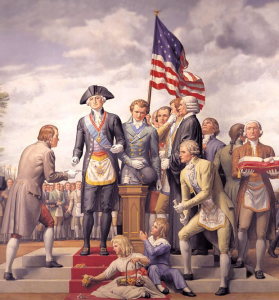 This theory makes perfect sense as well because the United States was founded by Anglo Saxons who were well known Freemasons and as Albinus says, “The Saxons were descended from the Ancient Sacae (the Sakas) of Asia, and that eventually they were called Saxons.” The English word Saxon is derived from Persic word Sacae-sun or Sak, which means dog. The Sakai or Sakas and Sacse, Saha, Sahia, of India; or the Median Straxa, are all mutations of the same word Sak. The Persians who had admired the leadership of all Scythians tribes by naming them the Sacae (dogs). Herodotus had said that the Persians gave the name of Sacae or Sacans to all the Scythians and Pliny says that the Sakai, who settled in Armenia, were named Sacassani. Ptolemy also mentions a Scythian people sprung from the Sakai, by the name of Saxones.”
This theory makes perfect sense as well because the United States was founded by Anglo Saxons who were well known Freemasons and as Albinus says, “The Saxons were descended from the Ancient Sacae (the Sakas) of Asia, and that eventually they were called Saxons.” The English word Saxon is derived from Persic word Sacae-sun or Sak, which means dog. The Sakai or Sakas and Sacse, Saha, Sahia, of India; or the Median Straxa, are all mutations of the same word Sak. The Persians who had admired the leadership of all Scythians tribes by naming them the Sacae (dogs). Herodotus had said that the Persians gave the name of Sacae or Sacans to all the Scythians and Pliny says that the Sakai, who settled in Armenia, were named Sacassani. Ptolemy also mentions a Scythian people sprung from the Sakai, by the name of Saxones.”
The Persic name Sacae-suns also correlates with the warriors, heroes and kings mentioned above that are found in Ireland, Scotland and Britain under the Irish names for dog in “Cu” such as in Cunobelin: the head king, the solar king, dog of the sun, the pendragon. These were all the same race of tribes of the Scythians who drove out the Celts and settled in northern Europe. They would later became known as the Angles, Jutes, Picts, Scots, Goths, Visigoths, Ostrogoths, Danes, Normans, Germans, Teutons, and the Sacae-suns. Hence, all these tribes had sprung from essentially the same Scythian race to eventually unite to become the Anglo-Saxons.
The founding fathers being some of the most famous Freemasons ever known were fond of the Anglo-Saxons and who were also followers of the Isis and the Dog Star, Sirius. This can be verified in the letter by John Adams to his wife when he, Benjamin Franklin, and Thomas Jefferson were appointed to a committee in the design for the original Great Seal of the United States. Adams wrote;
“Mr. Jefferson proposed the children of Israel in the wilderness, led by a cloud by day, and a pillar of fire by night, and on the other side Hengist and Horsa, the Saxon chiefs, from whom we claim the honor of being descended and whose political principles and form of government we have assumed.”
Luke 16:13 (NIV) “No servant can serve two masters. Either he will hate the one and love the other, or he will be devoted to the one and despise the other. You cannot serve both God and Money.” Then after Saint Luke’s great warning, we have a later prophet in Thomas Jefferson who said, “I believe that banking institutions are more dangerous to our liberties than standing armies…” and “If the American people ever allow private banks to control the issue of their currency, first by inflation, then by deflation, the banks and corporations that will grow up around them will deprive the people of all property until their children wake up homeless on the continent their Fathers conquered.”
This quote from Kenneth Grant, and Aleister Crowley in the Hidden God describes what had occurred in the 6th Age and in 1776 under the veil of the goddess with ten thousand names – “Horus is thus Hrumachis, son of the Star, Sirius… Sirius, Sothis or Set-An, thus represents the supreme, the eternal light. Sirius is therefore the key to the present Aeon of Horus, for it represents the Energy of Satan that will permeate the Earth during the present cycle.”
Dragon and Dog are symbols of Gates to Heaven and Hell. The Dog and Dragon have always had a fighting relationship and it is said in 2012 to be the year of Dragon and the sign of Chinese Horoscopes is that the Dragon is the officer in charge of 2012. This year is characterized by the Dragon and the element of water in Aquarius known as the water bearer. The water bearer is also symbolized by the Face of a Man in the Book of Revelation as one of the fixed signs of the zodiac.
Jesus says in Luke 22:10 of Age of Aquarius, “A man will meet you carrying a earthen pitcher of water; follow him into the house where he goes in.” Jesus tells us to “follow the water-bearer” and it is the Levites whose symbol we find today in a water jug or pitcher into a bowl is the symbol of the Levites who are the leaders of the 12 tribes of Israel. The Levites were responsible for cleaning the hands of the Temple Priest, High Priests, Peters or Cohen and it is the Levites for whom King David said, “None ought to carry the ark of God, but the Levites; for them hath the Lord chosen to carry the ark of God, and to minister unto him for ever.”

Moe is the founder of GnosticWarrior.com. He is a father, husband, author, martial arts black belt, and an expert in Gnosticism, the occult, and esotericism.

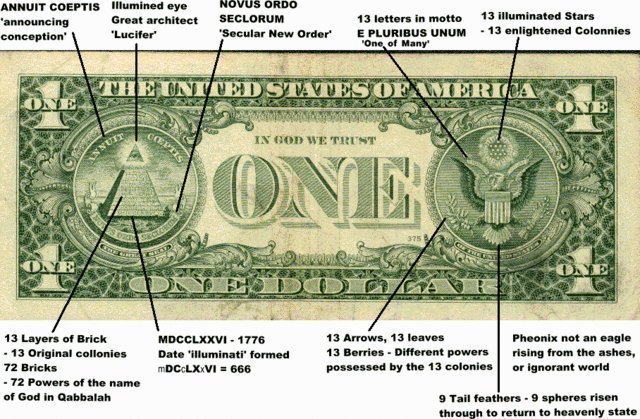
![Of the death of the kings Oswy and Eghert, and of the synod held at the place Herutford, in which Archbishop Theodore presided [670-673 A. D.] | Book 4 | Chapter 5 Of the death of the kings Oswy and Eghert, and of the synod held at the place Herutford, in which Archbishop Theodore presided [670-673 A. D.] | Book 4 | Chapter 5](https://www.gnosticwarrior.com/wp-content/plugins/contextual-related-posts/default.png)
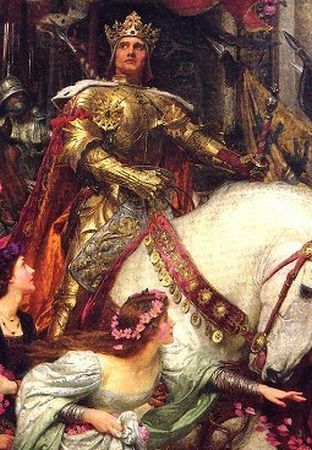
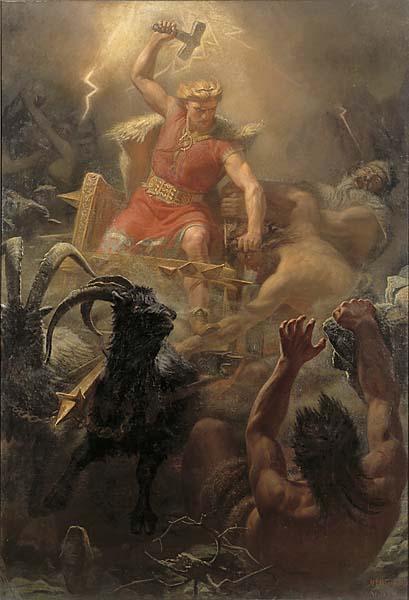
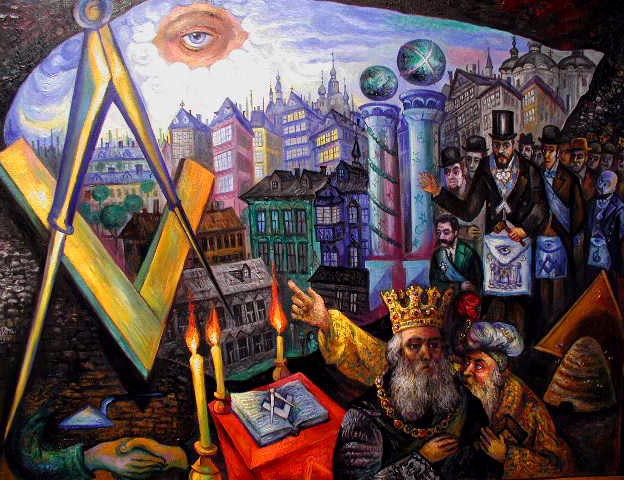
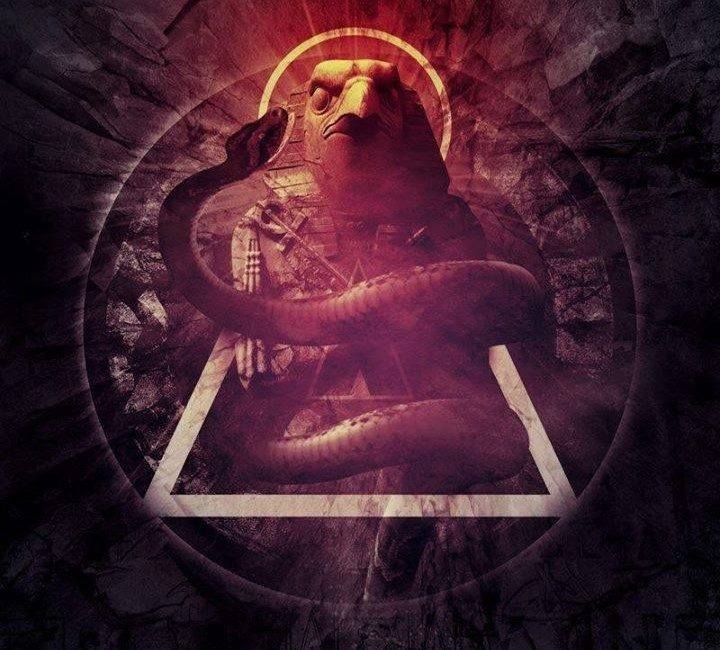
Hi Everybody — I just wanted to add a few things — there is evidence that it is likely the Egyptian Hieroglyphs (aka Kemetic Medu-Neter) may predate Sumerian Cuniform as the oldest writing form.
Earliest Egyptian Glyphs
http://archive.archaeology.org/9903/newsbriefs/egypt.html
And a comment on the Kemetic Netjeru – it is also possible that the concept of Isis/Sirius moved from Kemet (Egypt) and over to Mesopotamia and not the other way around in Ancient kemet the African name of the Goddess the Greeks named ‘Isis’ was Aset – (Auset, iset) meaning she of the Throne — (and likely where we get our English word/concept of ASSET)
This is just my humble opinion the the unity of the Trinity system of Father-Mother -Child just seems more uniformed and cohesive than those systems found in Mesopotamia — Isis/Aset – Osiris/Asar -Horus/Heru/Amen-Ra and the Egyptian/Kemetic/African names for these Gods are in much wider usage in the secret societies as well as in the public — The mystery of the widows son in Masonary; as our author pointed out — but also in Use in The nation of Israel for instance– using the Egyptian /Canaanite names of Is-(Isis) Ra (Amun/Amen-Ra) and El (El Elyon/Osiris/Asar/Saturn/Capricorn)
The Path to Kemet: getting to know the netjeru
hepathtokemet.blogspot.com/2010/09/getting-to-know-netjeru-1-isis-or-aset.html
?We can see Aset mentioned as early as the Fifth Dynasty, 2494 – 2345 PCE (pre common are, a.k.a before Christ), in the Pyramid Texts, 4th Utterance:
“Recitation by Nut: O King, I have given to you your sister Aset, that she may lay hold of you and give to you your heart for your body.”
This is only the first written mention of Aset; the actual origins of Her are uncertain. The research I’ve done suggests Aset has been worshiped as early as 3100 PCE, but I can find no legitimate source for this. If anyone has any documented source of the first appearance of Aset let me know. However, 2494 PCE is still fairly early as far as documented history goes”
And one more addition – in my own intuition — I believe the names Isis/Ishstar and Astarte (Starbucks logo girl I’ve heard>>) All seem to possibly reference the cosmos these two names in particular seem to point to a star– Ishtar (=I-star) and Astarte (A -star or As-Star) hmmm.. a more crazy one is Isis means I-Sinewave or (I-snake) or both and probably the source of our English word — “IS”
Other names to consider for the Goddess (or Goddess Energy) of Sirius — are Sophdet, Sothis and the Gnostic Sofia (Sophia) —
Amen.
I want to attach a link for the Isle of Kos (Cos), and the Isle called Dia. My problem is that Kos is an island by Rhodes, and the attached does have a Koan discription.
http://en.wikipedia.org/wiki/Kos
However the island called Dia doesn’t reference this Koan name, and claims a Hyperborean Zeus myth, relative to your Crete proximity.
http://en.wikipedia.org/wiki/Dia_(island)
I think a Cos on the Wiki map by Rhodes could allow your Telchine-Phoenician (Crete) connection, but your statements above imply also an west to east migration, or as northwest to southeast, and at much later dates, or AD time frames.
If we gather the Phoenician “purple-dye” of Tyre in Lebanon, a Phoenician city, it may follow to, or from Italy, then to Ireland. I’ll attach three web link for these locations, and timeline dates currently known. Keep in mind these dates would align more to Mycenaean periods, and Ireland is the later currently known which implies an east to west migration, if, the same tribal people and knowledge went to these territories and brought the techniques with them likewise. These are locations and archaeological data points, not necessarily the total picture. I think your Levite Biblical timeline may work better for both dates and territories as possibly related herein, and to include the Israel blue dyes found in some older clothes from Levant regions.
http://en.wikipedia.org/wiki/Indigo_dye
http://en.wikipedia.org/wiki/Coppa_Nevigata
http://en.wikipedia.org/wiki/Dog_whelk
One reason, and similar to the Ireland island Iona for burials, is that dogs and/or wolves would dig up burials on the mainland. They would isolate burials in locations where these animals couldn’t easily access the location. Ireland has additional shoreline crags with steep spiny rocks used for this purpose as well as Iona Isle.
I want to also relate that the Biblical Tarshish is a Benjamite name, and relates as Tartessos (Tartessus) Spain, by at least some historians. I’ll provide a link for the Spanish location.
http://en.wikipedia.org/wiki/Tartessos
Tartessos is believed to be a mining location of ancient times, and would possibly be Phoenician related, and their alphabet as possible connections to Medieval Irish discussed in the attachment. Can they also be Koans’? In Ireland, early mines are along the southern regions of the country. Tartessos is along the Alborean Sea as previously mentioned by me, and possibly relative to England’s early Albion word. I see Hyperboreans (Greek), or Boreans in all of these locations, including the “Hyperborean Sea” on older maps around Ireland regions, and your Island Dia, and Crete.
See what you think about these inputs. Thanks, GGG guy.
Hello GGG guy,
We simply cannot rely 100% on wikipedia for true history or especially history as it relates to these islands. In addition, let me please add that I’m a direct descendant of these people and have the DNA Gnosis to properly write and speak on the subject. It was an East West migration with many criss cross and back and forth patterns as well. My research proves to me that the ancient Cretans or Phoenicians were a mixed race of Egyptian and Hittite races who migrated from Egypt and Turkey to Crete and Greece, and then back again. They were the Ethiopians, Greeks, Greco Egyptians, and the Greek Hellenes. This is a story in itself that could take a book to explain.
There are strong connections to Rhodes from Crete, but not from Rhodes to Crete. Rhodes was where they went and had connections to after they had established themselves on Crete. In regards to the various names for the islands, I have studied this thoroughly and I’m 100% convinced that much of this history has been lost and or purposely changed at some time.
I have found a lot of documentation in my research from old books and authors pre Wikipedia that clearly state that the islands of Crete and Dia etc were considered the islands of the Gods and Blest. This is where not only the laws of Solon had originated, but also where the greatest of all Greek Gods was born and then hidden in a cave by his mother Rhea. These islands have went by many names throughout history such as for Crete = Candia, Cappadocia, or what the Egyptians had called Keftiu and in the bible Kaftor/Caphtor. The Arabs called Keritha. Pliny says that the Cretans were called Curetes, and that their king was Philistides. Crete. Homer had said that Crete had 100 or at least 90 cities. One of these cities was TELCHINIA, a city of Crete, where the Telchines then migrated to Rhodes. Another was Caesaria which is a city on crete dedicated to Augustus Caesar and also Samaria (Holy Mary).
Pronounced Kreet.
A large island south of Achaia and Asia.
Paul’s ship was blown there by unfavourable winds when he was travelling to Rome (Acts 27:7-15).
People from Crete were in Jerusalem on the day of Pentecost following Christ’s ascension (Acts 2:9-11).
Cretans had a poor reputation (Tit 1:10-13).
Titus had the unenviable task of setting order in the churches there (Tit 1:5).
Here is more from the book, “Crete in the Greek Tradition,” By Theodore Arthur Buenger;
http://books.google.com/books?id=NrIUAAAAYAAJ&pg=PA56&dq=Islands+of+the+Blest+crete&hl=en&sa=X&ei=-7z3UoqQIdCDogSL9YLICA&ved=0CCkQ6AEwAA#v=onepage&q=Islands%20of%20the%20Blest%20crete&f=false
The island of Dia = Kos, Coos, Cous, Delos, Merope, Lemnos, Letos, Staunchio and Patmos. Many great men were either born on this island, or had become masters in their chosen arts at one of the world’s greatest schools that has ever been known. Men who would influence all the arts, war, games, and who would be pioneers in the field of medicine, such as the Father of Medicine, Hippocrates who was born on the Island of Kos. This is where he had formed his famous School of Medicine. This would also be the birthplace to Pharaohs like the Greco-Egyptian, Ptolemy II. Many men of literary talents were also born there. Poets such as Simonides of Ceos, Prodicus of Ceos, and medicine men who were also comedians like Epicharmus. All of them being Kohens from the Island of Kos.
the island of Kos is now known as Dia which is named after the Roman Goddess of hunting, Diana. The Latin “Dea or Dia” represents the Roman Goddess ‘Diana’ which was Rome’s replacement for one of the most widely venerated of the Ancient Greek deities of the island, Artemis who was also known by the name of Letois.
Diana (pronounced with long ‘ī’ and ‘ā’) is an adjectival form developed from an ancient *divios, corresponding to later ‘divus’, ‘dius’, as in Dius Fidius, Dea Dia and in the neuter form dium meaning the sky. It is rooted in Indoeuropean *d(e)y(e)w, meaning bright sky or daylight, from which also derived the name of Vedic god Dyaus and the Latin deus, (god), dies, (day, daylight), and ” diurnal”, (daytime).(Wikipedia)
in search of the Lost Island of Atlantis, French explorer Jacques Cousteau had carried out a series of underwater explorations under the watchful eye of the Greek government in 1974-75. He had found a lot of evidence there of many shipwrecks with actual buried treasure of pottery and artifacts. In an old article in the Radio Times, Cousteau stated that the Minoan Port of Dia had once been active. However, this data and information that he had found there, appears to have been kept mostly secret ever since.
This evidence from Jacques Cousteau proves that people not only had inhabited the island of Kos (now known as Dia), but that it was also a major center and/or port at one time. He had claimed, that on Dia was the biggest and most important ports in the whole island of Crete. Here is the part of the official explanation of the discoveries that Jacques Cousteau had made when he had explored there:
The Undersea discoveries of Jacques Yves Cousteau in 1974-5, while searching for the lost Atlantis between Crete and Santorini, with a special bathyscape, are of great ecological and archeological interest, as seven wrecks were found on Dia. In 1976, Cousteau discovered some squared and rectangular rocks in the seabed that made up an artificial breakwater, which researchers named Cyclopean Walls. Cousteau suggested that there stood one of the biggest and most important ports in the whole island of Crete. The harbour appeared to have sunk due to the destruction caused in the 1450 BC volcano of Santorini. However, the port was later found to be much older, thus research became more complicated.
Today the only visitors to the island would be a priest from Crete who performs mass on Dia (Kos) just once a year, but for the most part, the island is uninhabited except for a few protected animals that I had mentioned above. Please watch this video below at right around the 17 minute marker, to witness the section of film where Cousteau goes into Crete and his exploration of the Island of Dia (Kos).
https://www.gnosticwarrior.com/dragon-isle.html
My pleasure CGG Guy. The name Koan, Coan, Kohen or Cohen was not originally a family name as it i snow, but a tribal name. It would be akin to someone saying they are a Bedouin, Cherokee Indian or Navajo etc. The true Koans are the native descendants of the ancient Island of Kos now named Dia across from Crete who were eventually banished from these lands and if they returned per Roman Law, it was punishable by death.
They later became known as Levites and helped form the priesthood of the Catholic Church from 500-800 AD. Many of them were from Ireland, Scotland and Britain and then moved into France under Charlemagne. They also have a log history on the Island of Iona.
https://www.youtube.com/watch?v=evwIyD5g8Co
People are tribal and this now equates to many humans who do not know their pasts to being loyal to nations, political parties and sports teams. Their missing the main tribe and that is there DNA tribe which makes it MUSH EASIER to govern the minds, bodies and souls of humans who do not know their pasts or tribes.
Character assassinations and people who make research like this personal or think it is racists or conspiracy theory stuff are often simply low minded and ignorant humans whose blood and minds are either so diluted or controlled that they do not think for themselves because they are akin to programmed robots or zombies who are trained to attack anything and anyone who goes against their mind control programming.
Peace, love and light be with you ALWAYS!
Thanks Moe for the responces. I’m wondering if you know the tribal name in France territories that would than relate to the name Kohen? I’m thinking during the dark ages of Europe, and Gaul, or Celtic type tribal relations, which in theory would trace back to Levites. I haven’t heard of a Levite tribal name in these regions. The other question would be the date they arrived in these regions?
I’ve also spent some time in your web site in the other forums, and I would agree that in my other blogs, some other folks do indeed attempt to use personal character assassinations on me as a way to discredit my shared information. I generally use more of hard fact research data from various books and types of forensics to qualify my statements – if needed – and this generally works pretty good, in spite of differences in opinions, I have lots of data to employ in a more global arena. Some of these bloggers have also agreed with some of these topics. In general, most folks are nationalist, a different statement than to say “racist”, which I think goes with the territories involved. As you stated above, people need to understand these differences and remain civil, and to respect differing opinions on some of these matters. I have said openly that I don’t expect anyone to take my word for any of my findings. I don’t appreciate character assassination none-the-less. Most of these players can’t keep pace with my references and soon go away, as well. I think we are both above this inferior level of debate, which you have expressed herein. I also state that I have a 1st order approximation based on my findings. To claim “fact” one would need much higher level of scrutiny, of which, I doubt I could do anyway, because these types of historical tracing does require many different types of forensics and other specialist in these various types of discipline. Meaning, it requires different players with different types of talents. I don’t think anyone can be a do-it-all. It is way too complex for this type of simple logic. I think your aware of this as well.
I also mistakenly inferred Hohen, for Kohen, but these two names can have a relationship in a Celtic Gaul medeival period. I’ve read more of your other forums. albeit complex. Thanks, GGG guy.
I have a Hohenstaufen crest and text part of this picture image which includes the names Burjan, and Buren. I can’t attach this to your web page. Maybe you can send me an email, and I can forward this to you directly.
In my comments I stated your timeline at ~3000 BC, but should be 3000 ybp or about 1000 BC.
I thought I could add some information to the Crete vs. Rhodes as the origin or first appearance for the Telchines. I think your timeline is after 3000 BC. I will attach a recent mtDNA link to Cretan remains that are Minoan, and earlier than ~3000 BC. It suggest they are Europeans, not Egyptian, Levant, or Anatolian ancestors.
http://www.bbc.co.uk/news/science-environment-22527821
I also reviewed your reference to the book Archaic England, by Harold Bayley (p.493) where it states; “The original Telchines are described by Diodorus, as first inhabiting Rhodes, and the Colossus of Rhodes was probably an image of the divine ‘Tall King’ or ‘Chief King’.”
I’ll leave a copy of the book for inspection.
http://www.gutenberg.org/files/41785/41785-h/41785-h.htm#CHAPTER_IX
If you continue with this text, there is quite a bit of information given for Druid “Cabiri” priest, and coins. Coins are basically after 600-800 BC around Lydia, and my contention is the the English “Bury” coins of Norfolk date to ~ 200BC, and some exhibit dog-wolf as in the case for Cunobelin. There is reference for the Etruscans which I claim connects to Lemnos Isle, a Burjan tribe, and blacksmiths. There is an iron age site in England called Burrians’ Hill that exhibits a smelter but I don’t have a date for this archaeology, where I presume, may be because organic material wasn’t available. This site has been plowed over, likely many times in its faming field location, so it maybe contaminated too much for clear organic material to be indentified, or maybe its still being worked. It was a small iron operation at any rate.
About the Cretan DNA, I should note they used the term Iberian as a possible source in Europe for this mtDNA Haplogroup H.
I’ve read that the Telchines originated on Rhodes, and on Crete. I haven’t decided yet, myself, which may be the correct. For me, the fish type god suggest Sumerian relative to fish-god creation themes. Minoans, and Mycenaean, are both double-battle-axe cultures, and this relates to the “double-axe cuture’ in Germany I recall as 2500BC. Saxon and axis could also be related to this “axe” word.
My issue is the timeline for the Nordic God Buri which I’ve bracketed into 2000-3000 BC.
A double battle axe is also called a labry, and I think a “labyrinth” may be a miners mine-shaft. Iron means “holy-metal” and, if caves are sacred chapels, this would follow by definition.
If the Norse god of swords “Tyr” relates as decendant of Buri, then a Telchine timeline would bring this North perhaps after about 2500BC. This could be later Minoan, and/or Mycenaean related.
Its also relizable that Tel Kabri site in the Levant could be aligned via the Minoan style artwork.
Dogs guard the gates to the underworld where miners work is performed. The link is the Kabeiros Cult for Druids, and Europe, and the Etruscans, in my opinion. I think Benjamites, whom fight like wolves can perhaps be another name, that’s also related.
I also think is was these metal folks that added-on to the existing Northern folk-tales, because Buri is left out of most of their tales, and some historians suggest that when these people showed up around the Baltic regions, the existing people assimilated their god, and likely hardware, without a battle, and accepted them as a ruling group as well. My thought is that if you knew how to smelt metals, then stone age people would want these superior tools. This is true for American Indians after Columbus, where knives were good trade barter the way I understand it. This means Buri was a Northern “add-on” and they to likely realigned the existing mythical stories into the pantheon we know now. It may be true they as Hyperboreans, and/or Idaean Dactyls were suspect of this in the Aegean, of which I see this as equivalent. Most cases would encompass battles and wars, different from the Northern event as I’ve read. Hard to prove though none-the-less.
I’ve gleened other info from the Archaic England book years back, however, I find it quite difficult to ascertain meaning in the Old English translations as well.
See what you may think on this Crete DNA, and info for the Norse Buri would be useful to me if you’ve encountered anything on these sorts of questions.
I will add the “Gates of Hell” page and the dog datekeeper statue data. Fits your forum quite well. Thanks again, GGG guy.
http://news.discovery.com/history/archaeology/gate-to-hell-found-in-turkey-130329.htm
Wow, thanks again for all the great research and theories you have presented here. You are very knowledgeable about this subject. That is rare in this day and age. My reply is also partial since I’m still working on your comments.
Like Plato had said, ALL learning is remembering and that déjà vu is an actual real memory of events that took place. I know all learning is mostly remembering and déjà vu because in this life, I AM verifying these ancient facts with my studies and writing that can also be backed by my DNA via science. After all, I’m a high school drop out who has had absolutely no formal training, history lessons or help from anyone on these types of subjects. I’m 42 years old and have only started researching this over the last few years and just recently I had found my ancestors, the Telchines in Crete and my Kohen ancestors on Kos which is now called the Island of Dia.
Yet, I can easily excel many historians and alleged experts who write about this type of history because I AM a direct descendant of these same said Greek Historians. This is why you and I seem to be on the same path of our ancestors. For we now know via modern science that our DNA is like a computer in which it remembers and records our lives as it evolves or devolves.
My son is also left handed and his name is Evan Noah. In Hebrew the meaning of the name Evan is: Stone and in Celtic, young warrior. Most people who are left handed seem to be of this Greek and Caucasian descent.
I do not write like this to say woe is me or that I know more than anyone, but for the fact it comes naturally to me since all learning is remembering and when you study the same path of your ancestors, you reactivate this Gnosis in your DNA which then take you to a new level in learning.
ROYAL BIRTHMARKS AND GENGHIS KHAN:
There is a legend that when Genghis Khan was born, he had the birthmark of a clot of blood in his hand. This makes perfect sense since we can witness today via science the widespread distribution of the A Mongolian spot or Mongolian blue spot, or what is simply a birthmark that appears mostly on the buttocks or back of people of Mongloian decent in approximately two-thirds of the human population which usually only appears in male babies from that part of the world. These babies can be traced right back to Genghis Khan.
Genghis wrote into the Yasa that only a member of his family, the Golden Family, could exercise the highest authority. The name, Golden Family is very important because Genghis Khan has held the golden fleece. The shepherd Hermes, god of the sheep, had made a ram with a golden fleece for Poseidon, Zeus’s brother. Zeus was born and hid on Crete at Mount Ida, and not on the Island of Rhodes.
THE TELCHINES AND RED MAN:
The first Telchines were who I call the people of Adam, or red man. They were also the Israelites who with Moses had made the Exodus out of Egypt and into the Land of Milk and Honey. Moses and his people would be related to both the Hittites and ancient Egyptians through Ramesses II and the III. A new race of people who formed a army and navy here on Crete and the surrounding islands who became known as the Sea Peoples, Phoenicians and the Greeks. They had signed the Ark of the Covenant which was Brotherhood of All Time in which the Hittites and Egyptians had became one soul and one heart as brothers solidified by blood and DNA with Ramesses II marrying and having children with a Hittite princess. This produces red skin sons like Ramesses III who would be Adam, which means red man in Hebrew. The word Ark is a Hittite word meaning contract.
These people would be the Phoenicians and also American Indians. After the Vikings had taken over the Church, a new race of men via the Norman Anglo Saxons had arrived on the scene. This race would now be the one holding the sword with French King Charlemagne one of the first true representations of this race and new era.
THE TELCHINES AND CRETE:
Sir William Smith in his book, A Smaller Classical Dictionary of Biography, Mythology, and Geography had described the Telchines as a family or tribe who represented three different aspects and he said they first were in Crete and later Rhodes:;
TELCHINES (-um), a family or a tribe said to have been descended from Thai a sea or Poseidou (Neptmie). They are represented in 3 different aspects: (1.) As cultivators of tht soil and ministers of the gods. As such they came from Crete to Cyprus, and from thence to Rhodes, where they founded Camtrns, Ialysus, and Lindus. Rhodes,which was named after them Telchinis, was abandoned by them, because they foresaw that the island would be inundated. Poseidon was intrusted to them hy Rhea, and they brought him up in conjunction with Caphira, a daughter or Oceanus. Rhea, Apollo, and Zens (Jupiter), however, are also described as hostile to the Telchines. Apollo is said to have assumed the shape of a wolf, and to have thus destroyed the Telchines, and Zeus to have overwhelmed them by an inundation. (2.) As sorcerers and envious daemons. Their very eyes and aspect are said to have been destructive. They had it in their power to bring ou hail, rain, and snow, and to assume any form they pleased: they further mixed Stygian water with sulphur, in order thereby to destroy animals and plants, (3.) As artists, for they are said to have invented useful arts and institutions, aud to have made images of the gode. They worked in brass and iron, made the sickle of Cronos and the trident of Poseidon.
In the book, “An Historical Account of the Heathen Gods and Heroes,” By William King on page 24 who also said they first were in Crete and later went to Rhodes:
Hepaclidcs Ponticus says the Curetes born in Crete were the first Mortals that appeared in brazen Armour, and that their Rendezvous was in Eubæa, that they had the Education of “Jupiter, became afterwards his Fellow6draiers m his Wars, and at last placed him in his Father’s Kingdom.
More evidence that they were first in Crete is in the book, Archaic England: An Essay in Deciphering Prehistory from Megalithic … By Harold Bayley on page 493;
Rhea had other Priests in Crete, who afterwards transplanted themselves to Rhodes; they were called the Telchines, and were the Offspring of Thalajsa, or the Sea; they together with Caphira, Daughter of Oceanus, had the Education of Neptune, who was committed to them by this Goddess; for this careFul Mother is said to have preserved Neptune and Pluto, as well as Jupiter, from their ‘devouring Father.
SOURCES: ALL OPEN SOURCE AND NO COPYRIGHTS
I’m aware of the Genghis Khan blood clot, but never realized a birthmark nor the science of birthmarks. My understanding is Genghis may have been a bastard child in the family due to the fact his father had conquered a Tater king of a more western Russia and brought him back to Mongolia. It was said that he (Genghis) may have had a Tater mother, hence his brothers and sisters looked down on him. He thereby left this territory and grew up in the Lake Baikal regions independantly, where he supposedly also found a magic stick of sorts. He would have later returned to Mongolia, being much older, and therein began his princely kingdom events that eventually went westward.
My interest in this is due to the fact that all my ancestors believed the surname Burian was spelled as Buryan, and my father suggested Burjan as well. None of my ancestors could add any definition to these spellings. Burian spelled this way however exist in Bohemia today, and likely goes back a few hundred years. They suggested also a baron in the history (ref Count Burjan, or Buryan of Guttenstein, Austria), and my great grandfathers death certificate stated Austro-Bohemian. Czechoslovakia had three basic sub-groups being west-Bohemians, central Moravians-Silicians, and eastward Slovakians. Buryans’ tower can be found in Slovakia, on a church in Zillina, and Buryans’ tower in St. Buryans church in Cornwall, England (10th cent. AD, and tin mines), of St. Buriana (Irish missionary 4th cent. BC). In Arabic Burjan can mean tower. This suggest both spellings can be correct, and interchangeable. Connecting these two churches together is another story though.
Author-historian Andrew Collins concludes that Benjamites basically went to Norway. if so, than two locations can be captivated by me. One being Bjarmaland (of Burjan) on the white sea, and can be Hyperboreans, and Bergen where the celebrate the Boreas festival still today. This festival orginates in greece with the Thurians west of Athens. They can also be Hyperboreans. Hyperboreans founded the oracle of Delphi, and Apollo’s Temple in the front yard. I think Thurians may relate to Auther, or King Arthur in England.
In my name Burian, I will isolate Bur. A bur is a thorn, spear, or barb, as in metalworking burr tools/files, and the thistle (Scotlands coat of arms). A leprechauns tree of life is a thorn bush. Jesus crown of thorns would also relate. In Central the goji berry is a thorn bush (like most all berry fruit plants) and the call it a wolf berry. In Italy its called a lycium berry where lycium means wolf as well, and the country Lycia, which is a Telchine name, from Lycus-founder.
The word Telchine could mean Tel (far away as you’ve stated), and chine (dog from the word chin)
In India, the chin also means dog. I’ve traced Hyperboreans to the Kuras region in NW India, or Tibetan regions and the IVC, or Indus Valley Civilization time frame. This would connect to the Kassite Khabiri who actually lived in lower Sumeria. They would be the carrier with the boats, and relates to Bahrain Isle in the gulf as well. Noah’s ship I’ve read used wood from Bahrain. Gopher-wood is also said to be of Siberian pine. The very large Persian fleet is said to be of this wood as well. Note the god Boreas Wind sunk the ships via a storm, which is when the Greeks built the Boreas Shrine, due to the fact they had prayed for this because they were certain Xerxes would also attack them by sea. (ref movie “300”)
Another movie captivates my research called “THE 13TH WARRIOR”. This is a true story about the educated ibn Fadlan, the Arabic historical writer, that also was their ambassador, who held their embassy in Bolgar City, previously mentioned. The Vandals, in my opinion would be the people whom fought-attacked at night, also in this movie. Vandals in German means wanderers, same as Cain and Tubal-Cain, by definition.
Hyperboreans called themselves “Vans” as I’ve read (one-source) and would relate to Lake Van kingdoms in Anatolia, where I can relate a Burjan tribe in the region called Ahlat, which I think relates to Allah. Some migrated north through the Caucasus, and some west towards Troy. Did they stay in contact. I’m not certain. Odin can be found via Troy, and Etruscans relate to Lemnos Isle as the North Italy Etruscans burial type graves, and some language remnants match to Lemnos burials and grave inscriptions. Etruscan language doesn’t seem to match any other languages yet. Etruscans are miner blacksmiths, and have wolf gods as well. Burjans/Bulgars can be related to Lake Van likewise.
I could be technically called a red-neck, as you’ve pointed out. This would lead to the Esau part of Judah with the word “red” that I think most historians haven’t adequately defined relative to biblical tribes of Jacob family in Judah. I’ve always thought I have an American Indian nose, and the Chaldean of the Bible will work just fine for me.
The Sumerians had EMERALDS, imported from Ethiopia and dates to 3000BC, being the timeline for the 1st Egyptian dynasties. Through this, they exported to India as well because India doesn’t have EMERALDS, but lots of rubies. In Sumeria we find the Goddess of the Emerald, too. Emeralds raises the question of green color, and the hexagon.
I think the idea of a spirit/soul/ghost comes from the aurora, or Northern Lights, also called Aurora- Boreal, aka Hyperboreans.
The wolf-headed dragon, aka a Draco traces to Kipchacks (Qipchaq) and they are a su-group of the Burjan tribe, as was the tribe called Barrak. Some of the folks were mercenaries with Xerxes. I think Xexes was Persian, but these others perhaps not. Zeus’s edifice carved in rock close to Haran exhibibs a Persianish hat. Doesn’t answer the question though.
You’ve brought up Boeotian. They are one of my key links and the Island called Euboea. If we go to Thrace we have the early Vinca, and Boian cultures. The European Boii tribe relates to Bohemia as “home of the Boii” by definition. On Ptolemy maps, he shows Central Europe as Lugi-Buri tribe about where Bohemia sits. A Burian surname can be a Burian of a Buri tribe. This tribe also claims the name to originate with the 1st Nordic god Buri, as well. This make the most sense to me currently. A Buri tribe connects to Romanian Dacians where Daci, from Daos can mean wolf. The name Balkan can be Valkans where Vuko means wolf in Macedonia, at Vukovar city and river. Burjans of Macedonia also has a definition as “the wolf’s soul”. I believe these same people were on Lemnos Isle, wolf tribe, and blacksmiths, then as Boeotians supplied the alphabet which form the original Latin language alphabet through migrations through Crete and Sicily. It was Boeotians that connects Greek to Crete as well. Also Zeus’s altar (on wolf mountain I recall as called Lycus) in Greece competes with a Crete origin for Zeus as well. Some now believe that Zeus of Greece can be earlier due to concurrent archaeology being done there. The idea of migrations being east to west or west to east I haven’t fully ascertained yet. I think the solution may come from carbon-14 once enough is recovered from these regional territories.
Malta boy connects DNA recently from Siberia, Europe, and American Indians, and date to Paleolithic date line at about 22,000 BC. I would suggest all bets are off if we encompass the recent revelation. Malta was dug up back around 1922, and they didn’t know if the child was male or female. DNA has recently been achieved to differentiate sex, and time line, which is also backed with carbon-14, and the additional out-of Africa relics including Grimaldi “Venus” pocket sized figurines, and what appears to be lunar cycle pendants which exhibit spiral ring symbols. American Indians use the expression such as; “many moons have past” as a gauge of time as well. Seems like a slam-dunk to me.
Because my family said Buryan as the precursor for the surname Burian, then this leads to Buryats in Siberia, and St. Buryan in Cornwall, unless somebody else has a better solution.
The Burgundians are said to be Burjans by several historians. Burgundians are said to hail from Norway. By Bergen Norway there is a cave with a ship engraved on the wall and the word Burgundian inscription alongside. I would be of the opinion the the word Burgun comes from Burjan where in the Netherlands, the Dutch language would change the “j” into a “g”, so this does add up in this way (Ref Martin-Abraham Von Buren) United States 8th president. Of Buren city in the Netherlands, in my opinion. Also reference Buryan’s Tower (mostly called Burrana nowdays) in Kyrgystan. This is one of the only remaining landmark structures on the old Silk Road East-West trade corridor. Its also on their coins.
I have coins which can trace this tribal name due to the fact they were blacksmiths who made the coins, and a wolf/dog tamga is somewhat consistant as well. This includes Celtiberian coins in Spain, and Bury coins in England. I have a personal coin book from this alone, even Lycia versions, again of the Telchines. Also Avebury, Amesbury (Stonehenge), and Arbor henges in England would all be related and I define Avebury to mean Avenue of Burians. People hate me for this but they fail to disprove the concept. Bury can be a seat of government-law and order. Other terms as Burg-Berg (mountains), burroughs, barrows and such would be part of this logic. Also terms like Burn, Bury (burials), and Burs (thorns) can also be encompassed.
In India, the God of the underworld is named Kubera, and this can be traced into many places. The key is the fact he was a dwarf-pygmy same as leprechauns, and Norse god blacksmiths, and most all other blacksmith gods. Note that people in India bury the gold, and with the leprechaun the phrase “where me hiding me gold” which they bury. Hence these two factors for my tribal name are consistant, being; metal working blacksmiths, and dwarf type underworld gods, and the dog-wolf tamga. I need only these factors to satisfy my 1st order research data points. Note also the the Draco constellation circumscribes the North Pole as does the Bear. A Draco can be found on ancient Anglo-Saxon coins, too. In Sri Lanka, an iron-smith is called Kebara.
Probably a lot to manage, so take some time to think this through. I think the Internet will make this research accelerate in time and make the full picture more attainable. Because we lack direct evidence as you go deeper back in time, then a large amount of circumstantial data is required same as in a court room. All data, and types of forensic sciences need to add up cleanly for an acceptable outcome for any theory or concept, but you have to start somewhere none-the-less to realize this outcome, and, in some cases you need to be flexible as new data comes in, or newer sciences like DNA might suggest. Thus I have a theory, not necessarily facts on face value. My research is becoming more believable, albeit slowly. I think the key is in weighting the data. This is a critical step where I model from the hardest data, and soft dat waits before I incorporate it into my basic global timeline for this one tribe. There are thousands of tribes, so it takes what i’ll call judicial prudence.
Hello and sorry for the delays in commenting to you. This takes much more thought and research than the average comments on my blog. I could be wrong, but I feel this is spot on to the meaning of your last name. If we disagree, lets agree to disagree and respect one anthers findings. Obviously you have much more years of research than I do and my findings below are based on a couple hours my own research that I hope helps you in your quest. The history and geography surrounding your name I hope to address in another comment shortly.
HERE IS PART 1 OF MY REPLY THAT IS BASED ON MY OWN RESEARCH USING INTUITION AS A GUIDE:
The English name Burjan is derived from the compound words Bur and Jan. The word Bur essentially means to be caged or imprisoned and the word Jan is derieved from Jan or Jin which are common words for ” being ” (see Ga, Gan), in Chinese it is Nan-Jan and in Arabic, Jin (plural Jan).
Therefor, the name Bur-Jan means “caged soul, spirit, Genie in the Bottle or quite simply in your case, a caged daemon.”
THE NAME BUR:
From a Scandinavian language, such as Danish burre (“bur, burdock”). See also burr.From Proto-Germanic *būraz. Cognate with Old Saxon būr, Old High German būr (German Bauer ‘birdcage’), Old Norse búr (Swedish bur).
Noun- búr n (genitive singular búrs, plural búr)
larder
storage room
cage
Etymology
From Vulgar Latin *burius, compare Italian buio.
darkness (lack of light)
Swedish –
a cage
(slang) a prison, a jail, an arrest
att sitta i buren
to be imprisoned
MORE ON BUR:
Buur or bur in Danish means a cage; but I have ventured in this place to translate it by the word bower) of which J am persuaded this is the origin. Johnson gives a very unsatisfactory etymology of our word bower, or bour, deriving it from the boughs of trees, with which he supposes it to be constructed, or from the verb to bow, or bend. The most frequent sense of the word in old writings is a chamber, or the apartment of a lady; and meaning (as I have observed) in the Danish a cage to keep birds in, it seems to have had a metaphorical allusion to the old word burd or byrd, which is frequently used for a maid; as for instance in the beautiful song of Helen of Kirkonell Lee, “When in my arms burd Helen dropt, And died to succour me.” In this ballad the thrush and nightingale seem to be used metaphorically for the damsels. It appears in a note by Bussaeus to king Alfred’s Periplus Outhcri, that the species of whale, which is called by the Norwegians Huus-vhal, was formerly known by the name of Burhvalr. Olaus Magnus, lib. 21. c. 22 and 23. relates, that the inhabitants of the northern coasts made their huts of the skeletons of whales covered over with skins ; and this had induced me to imagine, that the’name alluded to this custom: but in the notes to Speculum Regale, p. 127. it is stated to be derived from the particular structure of the whale itself. “Det navn Buurhval, som dem gives af det Buur eller Forraads-Kammer (cellå cibariu), som er i deres hoved.” i. e. ” Th« name Buurhval, which is given them from the Buur or provision-chamber, which is in their head.”
SOURCE: http://books.google.com/books?id=hoQUAAAAQAAJ&pg=RA2-PA31&dq=meaning+bur+cage&hl=en&sa=X&ei=DdPjUoTvCcbkoAS3jYHQAQ&ved=0CEMQ6AEwAA#v=onepage&q=meaning%20bur%20cage&f=false
THE NAME JAN:
As I mentioned above, the word Jan is derieved from Jan or Jin which are common words for ” being ” (see Ga, Gan), in Chinese it is Nan-Jan and in Arabic, Jin (plural Jan).
The jinn (Arabic: الجن al-jinn, singular الجني al-jinnī; also spelled djinn), or genies, are spiritual creatures mentioned in the Qur’an and other Islamic texts. This is where we get the genie in the bottle that can be found in folk-lore, where the person rubs the lamp and makes their wishes known to the genie (spirit) trapped in the bottle (body) or should we say ‘caged?’ The Qur’an mentions that the jinn are made of a smokeless and “scorching fire”, but also physical in nature, being able to interact physically with people and objects, and likewise be acted upon. Like human beings, the jinn can also be good, evil, or neutrally benevolent, and hence have freewill like humans and unlike angels.
Islam recognizes the existence of jinn, which are sentient beings with free will that can co-exist with humans (though not the genies of modern lore). Jinn is a noun of the collective number in Arabic literally meaning “hidden from sight”, and it derives from the Arabic root j-n-n (pronounced: jann/ junn جَنّ / جُنّ) meaning “to hide” or “be hidden”.
The Chinese think of demons as malevolent animal spirits or fallen celestial beings that have acquired magical powers through the practice of Taoism. They call the good demons, Yaoguai (妖怪 pinyin yāoguài) or yaomo (妖魔 yāomó, literally, “demon”) or yaojing (妖精 yāojīng, literally, “sprite” or “seductive”), which is a Chinese term that generally means “demon.” They call the bad demons, mogwai (mo) which often inflict harm on humans.
Please keep in mind a Daemon or Demon is not always bad. The English word demon is derived from the Latinized versions, “dæmon” and “daimôn” of the original Greek “δαίμων.” According to Plato, in his Cratylus, the etymology of daimôn/daēmones (δαίμονες: deity/daêmôn δαήμονες) is from tfanuwv, knowing, wise or intelligent. To the Greeks, these demons were a divinity or supernatural being of nature between the gods and humans who appeared to men, both to do them service, and to injure them. The Hellenistic Greeks divided daemons into good and evil categories: agathodaimōn (αγαθοδαιμων: “noble spirit”), from agathós (ἀγαθός: “good, brave, noble, moral, lucky, useful”), and kakódaimōn (κακοδαίμων: “malevolent spirit”), from kakós (κακός: “bad, evil”). – (Wikipedia) The name Jin Tanah (meaning Demon of the Earth). In places such as India and China, local demon deities hold extensive sway.
LINKS TO MY DAEMON ARTICLES:
https://www.gnosticwarrior.com/demons.html
Thanks for the reply.
I don’t know if Genghis Khan had a birth mark or not, but read he had a dog wolf nickname, but text doesn’t tell what it was.
I havd a wine colored birthmark on my chest, and I’m white Causcasion skin tone Blue-slight greenish-eyes, and blond-slight reddish hair. I thought the chestmark was from a guitar body edge because I’ve played this and a banjo since I was quite young ~12 yrs old. I fit your testimony I think, but I’m now 60 years old, so its hard to think back this far. My guitar induced mark is likely wrong anyway, and it’s a permanent mark.
Of interest, I’m left-handed as was the tribe of Benjamin, and Hebrew text right to left. in light of the definition for the name Benjamin “son of my right-hand”. Of interest, the Norse god of the sword Tyr is also left-handed because Fenris the wolf bit his other one off, as he was being chained to the North Pole.
I think the Telchines were of Rhodes first, then went to Crete (some claim was also called Telchinea). This is because of the Fish-dog-headed god figure which I see as a link to the Sumerian Enki god as fish-man-headed. This brings Sumerian concept to the Aegean, and follows to Crete. Telchines as blacksmiths trace to Aptera city on Crete.
A Burjan tribe was on Lemnos Isle, with the blacksmith Hephaestus, and relates Kabeiros cult of Samothrace and many amphorae have been excavated here. In the Levant the excavations at Tel Kabri tell a similar story as well as Minoan style artwork. I see Kabeiros as Ka (spirit/soul) similar to Egyptian “kha”, or, ka a Turkish wolf/dog. Beiro I see connected to Poseidon and the Telchines connects to Poseidon, too. Rhodes is thus a stepping-stone location. i actually see them all as Hyperboreans. Druid priest in France are in some circles called Cabiri priest, and Cabiri are also referred to as Galli. Seems logical to me. Both Druids and Telchines were known for astronomy.
Delos isle is also connected to Hyperboreans as Zeus and his son/daughter Apollo/Artemis are Hyperboreans, where Apollo was born on Delos under a palm tree. There is one palm tree on Delos today at the Sacred Lake, now pretty much dried up, Dogs were banned on Delos due to the fact someone was apparently killed by a dog on the Island.
If Benjamites were in North Levant, and later in the South Judah, then a Kassite Khabiri fits these locations likewise. The Khabiri attacked the Egyptian controlled areas in the North in Lebanon, then worked southward and expelled all the Egyptians, or killed them. This was the last vestige of Egyptians in these regions. This is recorded in Tel Armana text of Egypt. The problem is the Khabiri people, and their origins. A Kassite pre-Babylon of Persia, and Persian gulf fits the story, and a Persian Gulf Phoenician origin, too. It was the Kassites that brought the chariot into the Egyptian territory. Persian chariots are Copper Age from archaeology excavations, and the earliest known come from Russia. Same metal workers in my opinion.
The Fir Bolg (Roman Picts) is said to mean “men of bags”. I’ve read they carried bags of dirt. Doesn’t exactly sound like grocery shopping, even if people ground up emeralds in India to consume the dirt for medicinal purposes. I think this makes them miners hauling bags of dirt to make weapons. However, Fir Bolg can also mean Fire Rock/Stone, as blacksmiths. The word in Danish has two defintions. One as tree, as in Douglas Fir tree. Or, fir as fire, hence firestone. Mimics Excalibur or the sword in the stone.
In the name Excalibur one could derive Ex as runic “X” to mean “gift”, and ca as wolf/dog or god, and libur, to liberate. So the definition would read; “this sword is a gift from god, and charged by god, such that whomever can retrieve it from the stone, would be liberated for their cause”
In Russia, at Bolgar city on the Volga River south of Kazan, the was a Burjan tribe called the Marduan Princedom. They celebrated the “winter festival” and decorated a tree in central town square. I’ve read that the Runic “X” represented a “gift”, and the festival was a gift exchange. Later I also found that a Sweden or Danish research team determined that their Runic “X”, from a Ruin-stone was determend to mean “gift”. This matched my Russian definition, but didn’t captivate this Russian part in their report. However, St. Nicholas shrine in Bari (Barion,Barium) Italy 10 cent. AD is where he is currently buried. He was exhumed from Anatolia, and re-buried here. St. Nicholas is the “Saint of Gift Giving”. As it turns out, the Bulgar/Khazars renamed Bolgar city 760AD and attempted to squelch the Burjan “winter fest” where thereafter they move it form the city square out to the countryside. Here they would use sleighs (Russian troika) through snow and celebrate it anyway. Bari Italy coat of arms or shield has a blue and white checkerboard pattern, same as Bavaria (Bayern) and the BMW car logo. Santa Clause is mostly assimilated from German folklore of 2-300 years back, sleighs and such. It was said that the “winter festival” was solely a Burjan tradition. I don’t necessarily agree with this, and think its been around much longer prior to a 760AD timeline as well. Most websites are stuck at 10th century AD and Bari Italy timeline. I think the name roots for Bari are equally compelling. Can this be equivalent to your Christos definitions, as Xmas? Does your Greek “X” mean gift indirectly? I think we all know Christ wasn’t born in December, none-the-less.
The names Khazars, Bulgars (Burjan) are of the Tower of Babel tribal names. Bulgar can be shown as Burjan, and/or Burdjan -explained as an Arabic typographical error because in Arabic, there is small dots above letters which are easy to misread, or loose on older documents, which leads to these types of errors. I can separate Bulgars from Burjans in some cases, which other authors also realize, in some cases.
I’m still working your comments, and will add more to this yet. I think were on the same page, but tracing two different Biblical tribes. I’m freelance and come from an optics background, so I’m out of my league in some ways, but started my research in 1973, well before the internet and DNA, so I’m not barren of information. I think scientifically by nature. I think Hyperboreans are real people, not merely myths. Some would claim they wrote the myths, or, as Idaean Dactyls whom I suggest are the same people…etc.
Thanks for the inputs, GGG guy.
Interesting, but it is the wolf tribe Benjamin you have left out. His wolf is on their coat of arms still today.
The she-wolf founded Rome in the first place with Romulus and Remus. The Telchines of Rhodes (some suggest as Tubal-Cain (of Cain) are the sword blacksmiths inventors. Ghengis (Chinggis) Khan implies chin-dog in his name in light of Khan-dog. I read as “Dog King”. His family descendants have the name Buri to mean wolf. In Mongolia you have Burte Chino as Blue wolf or dog. In Turkey we find the she-wolf Asena, said to exhibit a “blue-mane” in some forms of of their old folklore, and also “gray-wolf” can be found.
I believe the Telchines were the mecenary group in Judah. I believe they are also a Kassite group in Persian Gulf called Khabiri. In Caanan the is the king named Bir Tsur translated as “God is Rock”. Note the Nordic god is named Buri, and is animated from rock, in the form of man. Their Adam is named Ask which I believe means “ash”.
Dogs typically guard the gates to the underworld. Recently, the Gates of Hell were found in Turkey (Anatolia) where Lycia means “wolf” from the Telchine name Lycus whom is said to have founded it.
My last name is Burian (Bohemian-American), and I’m R1a yDNA. I think it relates as Burgundians, and/or the Buri tribe in the “Gladiator” movie. the wolf god is in the movie, clearly. A true story of ~170AD on the upper Vistula River, fighting the Romans at this time, and recorded in Roman journals.
The Telchines relat to the dog Actaon, and Cerebus, where when the “Gates of Hell were discovered recently in Turkey, a statue of Cerebus was also dug up. This puts the nail in the coffin- I would suggest. Both Zeus and Apollo are wolf/dog related deities as well.
As Strabo suggest, Siberia (Buryats to name one group-Lake Baikal) and Iberians (Caucasus), and Iberians (Spain) are thus related. Iberians in Spain draws back as far as ~5000 BC, similar to the oldest megalithic stone circle structure in Europe in Portugal.
I think Hypreboreans are same as Iberians, or as Borean=Buryan=Burjan (Arabic for tower)=Buri, and Burian as a basic sub-set. The other name for Caucasus Iberian’s is Tiberia, or the blacksmiths at Bad Tibira city in Sumeria. An Arabic blacksmith is called qhan as in Cain- or Tubal Caian which some claim as Telchines.
I think Benjamin was the only one of the twelve-tribe names born in Canaan, and his name was changed by his father, meaning his name has been doctored (?). Because Saul founded the Israelites as the 1st king, he was a Benjamite, if this helps some on definitions. The Khabiri dates way back to the Tel Armana tablets of Egypt roughly 1600 BC. Some suggest the were Kassites which I can confer because Kassite phoenix bird has a dogs head, and the Telchine god is a fish with a dogs head. Would be in Beirut under Berytus as the earlier name, and on Rhodes Isle as the mountain Atabyrius, which is the original for the mount Tabor in Israel, known as the Mount of Tranfirguration.
If they brough dogs from Siberian or Central Asian wolf as dog DNA would suggest, then they are Tengranist (also today called Burchanist, a revival group). In this religon, Earth god lives at the tops of mountains (hence-pyramids), and cave are “sacred chapels”. Water is “Gods Blood” (hence-holy wells).
In old Armenia folklore it was the deified dog “Aralez or, Arelaz” that represents resucitation, and resurrection. Armenians were known to be “ash” worshippers as well. In Iranian mythology, Armenia’s part of the “7-Climes”, or Earth’s climates zones was called al-Burjan for this territory. In Iran the “land of wolves” is at Gorgan city location, too. Also called Vercania, or, Hercania.
Veria in Macedonia was called Beria in the Book of Acts. I believe the “v” is due to Phoenician influence, and the word I believe may originate from Phoenix, of Georgia, the Phasos River, where you find Phaesant birds, too. Could be the Colchus Empire with Jason and the Argonauts. It was the Boreads that built thee vessel, or Sea People, by name. date here is ~ 1200 BC, (Iron Age). Iron earliest traces come from here too.
Dogs, wolf, and blacksmiths are consistant globally, in my opinion. Note “Ulfberht” swords in Europe, where ulf=wolf, berh=bear, and the “T” can be Norse god of swords tyr, whom relate to Tyre, Lebanon. I think Beirut had a coin mint, but I haven’t verified this. The city Askalon relates as the birthplace of St. George, and his sword was named Ascalon. Here I think Ask-Asc = ash. This Canaan region is known for its dog cemetary similar to Egypt at Cunopolis.
I’ve read that Israelite didn’t think highly of Canaanite dog worship, but it seems they were fond of there swords and blacksmiths whom worked on David’s temple. And used there boats to haul the Lebanon lumber as well. I think they were the builders of Noah’s ark, too.
Telchines are known as early astronomers, too.
Burna Buriashi I, and the II, were rulers in Babylon, Kassite in origin, and can trace to Armenia (al-Burjan) likewise, due to inscriptions dug up at Metsamor. I think their storm-god Burias can trace to Hyperborean Boreas – North Wind, and p/o son’s of Buri, to include Odin and his two dogs, and Fenris/Fenrir, chained to the north pole awaiting the end of the world.
I’m typing fast and some of my spellings may be a bit off even though most of these names have several variations.
My concept is called GGG or Grand Global Genome, and my other web blogs are under GGG guy as a pen name. I believe this name and dogs cicumnavigated the globe way before Columbus (who was a Ligurian, not Spanish), and connects to American Indians after ~ 17,000 BC, but new data may suggest to be earlier. For me the question is, when was a tribal name traceable. I’m thinking after ~ 10,000 BC in practical terms. DNA may be able to connect these peoples without a name and would include dog DNA. See Malta Boy of Siberia if interested. Or. The Tarim basin mummies in Central Asia as one was nicknamed Bohemian just by the skull look or type. Personally, I see DNA as complacent to my studies, including my own I’ve tested. The Siberian part though is yet sketchy to the DNA analysis due to the fact the territory is vast, and frozen tundra such that even today people here are nomadic in nature, and there isn’t any large ancient cities found yet, nor has it ever been conquered by anyone, where Russia is of a protectorate status, and has recently brought their language here. I believe most Mongolians hail from Siberia of ancient times, hence they arn’t Hans, but Huns, and Bulgarians (sometimes as Burjans) were also called Hons historically. I think the term Skythians (Saka) peoples around the Black Sea would be appropriate extention into the time frames of interest, being Meso, or Neolithic, if dealing with most of the questions herein, on earlier origins. Malta Boy pushes into Paleolithic terms around Lake Baikal.
See what you think on this short form essay. Thanks, GGG guy
Thanks for the great essay and comment to add to my research. You bring up a lot of great points.
To recap some of mine and please forgive me if I may be off or misspellings;
In a hymn to the Egyptian god Amon-Ra it is said that ” the gods gather as dogs round his feet.” To the Greek goddess Hecate dogs were sacrificed. “In this case the victim was the sacred animal of the goddess to which it was offered; Hecate is represented in mythology as accompanied by demoniac dogs, and in her worship she loved to be addressed by the name of Dog. Here, therefore, the victim is not only a sacred animal, but an animal kindred to the deity to which it is sacrificed ” (1)
The demoniac dogs would be an allegorical representation of the magic that governs these people and tribal souls who are the original Beni Elohim. Hecate would the head bitch or Queen and Jesus the King.
The name Benjiman is derived from BeN YaH, son of YaH or Ben Ja. Meaning the Son of God from Bene Elohim (Hebrew: בני האלהים, Benei HaʼElōhīm; Greek: ϒἱοὶ τοῦ Θεοῦ, Huioi toū Theoū; “Sons of God” which further developed into the Hebrew name בִּנְיָמִין (Binyamin) which means “son of the south” or “son of the right hand.” The Tribe of Benjamin constitutes the heavenly company surrounding God in which ” the gods gather as dogs round his feet;” (Job i. 6; ii. 1); the heavenly host (1 Kings xxii. 19; Neb., ix. 6), whose duty it is to praise God (Pss. Ixxxix. 6; ciii. 20; Job xxxviii. 7, сотр. Isa. vi. 3). These are called, usually, sous of Elohim (Gen.whole visible heavens (vers. 6-7), finally coming from the north and descending constantly lower it раэ-че» away in the far south.”(2)
The city of Mari is known to be the ancient city of the Sumerians. The ancient texts found in this city date from 18B.C. and are written in the Akkadian-language, and refer to the Amorites by the name of the warlike tribe, ‘Banuyamina.’ The meaning of the compound Hebrew name, Banu- Yamina is another form of the English name, Benjamin. Benjamin was one of the Tribes of Israel. Both names meaning, “the Son of the right hand” as described when Moses delivered Israel from Pharaoh, he became the right hand of God. In Colossians 1:16 – “For by him were all things created, that are in heaven, and that are in earth, visible and invisible, whether [they be] thrones, or dominions, or principalities, or powers: all things were created by him, and for him;” Christ also ascended to heaven and sat down in the place of authority at the right hand of God as written in Peter 3:22 – Who is gone into heaven, and is on the right hand of God; angels and authorities and powers being made subject unto him.
Genesis 42:4 – But Jacob did not send Benjamin, Joseph’s brother, with the others, because he was afraid that harm might come to him. Benjamin is called Joseph’s brother, because he was so both by father and mother’s side, as the rest were not;
In the Blessing of Jacob, Benjamin is referred to as a ravenous wolf;The apostle Paul.[11] The Temple in Jerusalem was traditionally said to be partly in the territory of the tribe of Benjamin (but mostly in that of Judah), and some traditional interpretations of the Blessing consider the ravenous wolf to refer to the Temple’s altar, as simile in regard to the heavy presence there of biblical sacrifices.[11] Some scholars believe that it instead originates from the tribe having the figure of a wolf in its standard.
In Deuteronomy 33:12, it is said about Benjamin:
“Let the beloved of the Lord rest secure in him,
for he shields him all day long,
and the one the Lord loves rests between his shoulders.”
It is well known that many kings had birthmarks between their shoulders indicating, or rather conforiming their royal ancestry since a birthamrk is a herditary mark that is passed down to each generation from the marks of their ancestors. The Greek Goddess Demeter gave him an ivory shoulder; thenceforward the shoulders of his descendants continued to display a white birthmark. Aristotle said that the descendants of Camdus, the Spartoi (the sown) really bore a birthmark in the shape of a spear. Sir Lancelot had been born with a singular birth-mark upon his shoulder, which birth-mark had the appearance as of a golden star enstamped upon the skin and the French Merovingian kings were all said to have these same special birthmarks. Mohammed was said to have a large birthmark between his shoulders that was looked upon as the holy mark of prophecy.
Plutarch had said this about the mythical birthmark;
he armed men that sprang from the teeth of the dragon sown by Cadmus, from whom the oldest families in Thebes — a large part of the Boeotian aristocracy — were said to have descended. Something like this mythical birthmark had probably made its appearance on the body of a member of one of these ancient families. Nisibis was a Syrian city with an extensive commerce, with many Greek, and probably some Boeotian immigrants.
It may be that, in cases where the inheritance of a morbid physical constitution, or of proclivity to moral evil, seems to lapse in the first generation and to reappear in the second, the children of the diseased or depraved father have the physical or moral traits of their father, but are made and kept vigilant and faithful in self-care and self-discipline by the memory of their father’s infirmities or sins ; while their children have the inheritance without the warning.”
This is why it is said in Revelation 19:16: On his vesture/robe/garment and on his thigh he has this name written: KING OF KINGS AND LORD OF LORDS. The words, vesture, robe and garment would represent the “flesh or body.”
Have you ever heard of the Mongolian birthmark?
The name Ghengis is derived from the compound words, gan (钢 gāng, gång, gäng, gǎng, gàng, găng, and gắng) From Middle English gangen, from Old English gangan. This is where we get the other parts of the gang such as gunj (公主 gōngzhǔ, princess), and gun (公 gōng, duke). The word gis with the various spellings of ges, dis and jes, may be the word for God, or more appropriately a corrupted abbreviation of Gis-is or who we know today as Jes-us. The word “His” simply means “Belonging to or associated with a male person or animal previously mentioned or easily identified.”
Hence, the meaning if the word Ghengis would most likely signify the “Gangs of Jesus,” and Khan, would signify the dog servants of God . Hence, his personal gang in which “the gods gather as dogs round his feet.”
The Telchines (Telknines, Telkhis, Telegonus, or Greek, Τελχῖνες) were from the island of Crete and were a tribe of artists, magicians, warriors and merchants. the magical Telchnines would be known throughout history over the last three thousand years by a multitude of various names such as the Curetes (Kouretes), Cappadocians, Corbanytes, Phoenicians, Syrians or White Syrians, Sea Peoples, Philistines and the Minoans; just to name some. Strabo had written in his book ‘Geography’, the connection between the Telchines, Curetes and the Corbanytes;
“Some say that, of the nine Telkhines (Telchines) who lived in Rhodes, those who accompanied Rhea to Krete (Crete) and ‘reared’ Zeus ‘in his youth’ were named Kouretes (Curetes); and that Kyrbas (Cyrbas), a comrade of these, who was the founder of Hierapytna, afforded a pretext to the Prasians for saying among the Rhodians that the Korybantes(Corybantes) were certain Daimones, sons of Athena and Helios (the Sun) [i.e. this was regarded as a lie].”
Herodotus had said that the Curetes had come to Crete with the Phoenician Prince Cadmus. In Latin Crete is called, “Cappadocia or Cappadocian” who were known as a large tribe of the Magi and are also called fire-kindlers. Herodotus tells us that the name of the Cappadocians was applied to them by the Persians, while the Greeks had simply called them, “Syrians” or “White Syrians.” The Latin name of the Cappadocians were known as “the men of Caphtor”, who we can call today, “the men of Crete.”
The people and priesthood, known under one of their names as the Telchines, had originated on the island of Crete and were placed in charge of protecting Zeus (Jupiter or Jove) by his mother Rhea from his vengeful father, Cronus (Saturn). Rhea had hidden the infant Zeus in a cave on the island and then placed him in the care of these priests known by many names.
The following individual names of the Telchines or Daemons are attested in various sources:
Aktaios (Actaeus)
Argyron
Atabyrius
Chalcon
Chryson
Damnameneus
Damon or Demonax
Hormenius or Ormenos
Lykos (Lycus) or Lyktos
Megalesius
Mylas
Nicon
Simon
Skelmis
“A Smaller Classical Dictionary of Biography, Mythology, and Geography;”
TELCHINES (-um), a family or a tribe said to have been descended from Thai a sea or Poseidou (Neptmie). They are represented in 3 different aspects:
(1.) As cultivators of tht soil and ministers of the gods. As such they came from Crete to Cyprus, and from thence to Rhodes, where they founded Camtrns, Ialysus, and Lindus. Rhodes,which was named after them Telchinis, was abandoned by them, because they foresaw that the island would be inundated. Poseidon was intrusted to them by Rhea, and they brought him up in conjunction with Caphira, a daughter of Oceanus. Rhea, Apollo, and Zeus (Jupiter), however, are also described as hostile to the Telchines. Apollo is said to have assumed the shape of a wolf, and to have thus destroyed the Telchines, and Zeus to have overwhelmed them by an inundation.
(2.) As sorcerers and envious daemons. Their very eyes and aspect are said to have been destructive. They had it in their power to bring out hail, rain, and snow, and to assume any form they pleased: they further mixed Stygian water with sulphur, in order thereby to destroy animals and plants
(3.) As artists, for they are said to have invented useful arts and institutions, and to have made images of the gods. They worked in brass and iron, and made the sickle of Cronos and the trident of Poseidon.
ETYMOLOGY OF TELCHINES
The Greek word Telchines is a compound word combining the three words, Tel, chi and nes. The word tel or tele, a form of tele, meaning “afar, far off.” The word Chi is the 22nd letter of the Greek alphabet, (X) pronounced /’ka?/ or /’ki?/ in English. Chi or x is a symbol or number for Christ whose name in Greek (XpiVros, “Christos”) begins with this letter which is often used to abbreviate the name Christ, as in the holiday Christmas (Xmas). Christos means “anointed one” or “messiah.” In Plato’s Timaeus, it is explained that the two bands which form the soul of the world cross each other like the letter x. The word “nes or ines” in Spanish is “Inés,( orEenés),” which in Latin is the name Ynez and in French Agnes. Agnes \ag-nes\ as a girl’s name is pronounced AG-ness. It is the Latin form of the Greek name Hagnes, meaning “pure, holy.”
Tubal Cain had descended from Cain, the son of Lamech and Zillah, and the brother of Naamah. Tubal is said to be the last soul survivor of the race of Cain after the flood. The Sons of Tubal Cain, his descendants are first recorded in the inscriptions of Tiglath-pileser I, by the King of Assyria in approximately the year 1100 BC. Later they are also reported by Tukulti-ninurta II, Ashurnasipal II, Sargon and Shalmaneserr III, and are mentioned as the Mushki.
The Mushki had become the founders of Moscow in modern-day Russia who are also connected to the ancient race from the island of Crete
SOURCES:
1. (Robertson Smith).
2. An Encyclopaedia of Religions
By Maurice Arthur Canney
3. https://www.gnosticwarrior.com/telchines.html
4. https://www.gnosticwarrior.com/amorites.html